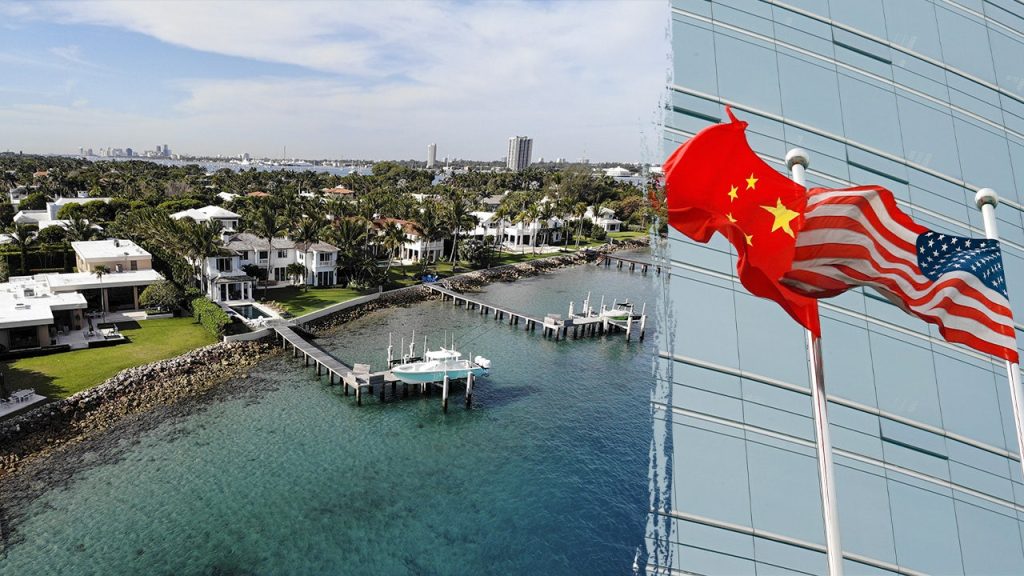China’s Rising Influence in the Americas: A Strategic Shift with Far-Reaching Implications
China’s growing presence in the Caribbean and Central America has sparked concerns about its potential access to strategic locations near U.S. borders. The Caribbean, often referred to as "America’s third border" due to its proximity to the U.S., has become a focal point for Chinese investment in maritime logistics and infrastructure. Experts warn that this expanding influence could grant China unprecedented access to key regions, including Florida’s coast, raising national security concerns. Over the past two decades, China has invested over $10 billion in six Caribbean countries, with projects like the $3.4-billion Freeport Container Port in the Bahamas, located just 87 miles east of Palm Beach, Florida. Analysts, including author and U.S.-China relations expert Gordon G. Chang, suggest that China is strategically positioning itself in a region critical to U.S. interests.
The Panama Canal and China’s Economic Inroads
The Panama Canal, a vital waterway connecting the Atlantic and Pacific Oceans, has emerged as another flashpoint in the growing competition between the U.S. and China. During his presidency, Donald Trump repeatedly expressed concerns about Chinese influence over the canal, stating, "China is operating the Panama Canal. And we didn’t give it to China. We gave it to Panama, and we’re taking it back." The canal was under U.S. control from its completion in 1914 until 1999, when it was transferred to Panama under the Torrijos-Carter Treaties. While the U.S. retains the right to ensure the canal’s neutrality, Chinese companies have made significant investments in ports and terminals near the canal. A Hong Kong-based firm operates two of the five ports near its entrances, raising alarms about China’s economic and strategic foothold in the region.
China’s Quiet Takeover: Money and Influence
Unlike traditional military expansion, China’s growing influence in the Americas has been quietly achieved through economic investments and strategic partnerships. Gordon G. Chang has highlighted that China’s approach involves "people in business attire with large checkbooks and suitcases of cash." This strategy has allowed China to gain control over critical infrastructure without direct military confrontation. In Panama, Chinese companies have invested heavily in logistics and trade hubs, effectively creating a foothold near one of the world’s most important waterways. Chang stresses that the U.S. must respond with its own economic and diplomatic initiatives to counterbalance China’s influence and safeguard its interests in the region.
icens of Chinese Migrants at the U.S. Border
The rise of Chinese influence in the Americas coincides with a dramatic increase in encounters with Chinese nationals at the U.S. border. According to a May 2024 report by the House Homeland Security Subcommittee on Oversight, Investigations, and Accountability, the number of Chinese migrants apprehended at the border has surged. In fiscal year 2022, there were 1,970 encounters, followed by more than 24,000 in fiscal year 2023 and 24,376 in the first half of fiscal year 2024. This shift has raised concerns among U.S. officials, particularly as many of these migrants are single men of military age traveling in groups and claiming to speak no English. Border Patrol agents have also noted that some groups carry identical kits, a detail that Chang describes as "an ominous sign."
A Historical Shift in U.S. Foreign Policy
The Trump administration’s focus on the Western Hemisphere marks a significant departure from decades of U.S. foreign policy, which often prioritized other regions over its own backyard. Gordon G. Chang points to Secretary of State Rubio’s first foreign trip being to Panama as evidence of this shift. "This is the first time in more than a century that an American president has given his primary principle focus to countries closest to the United States," Chang noted. This new focus reflects growing concerns about China’s expanding influence and the potential risks it poses to U.S. national security. However, experts caution that reversing China’s gains will require sustained economic and diplomatic efforts, as Beijing’s investments have already created deep roots in the region.
The Broader Strategic Implications
China’s growing presence in the Caribbean and Central America is part of a broader strategy to expand its global influence and challenge U.S. dominance. The Caribbean’s proximity to the U.S. mainland makes it a critical theater for geopolitical competition. As China continues to invest in infrastructure and logistics, it gains access to strategic locations that could potentially be used for military or surveillance purposes. The surge in Chinese migration to the U.S. further complicates the situation, raising questions about the intentions behind this sudden influx. For the U.S., the challenge is to balance its response to China’s encroachment while maintaining strong ties with its neighbors in the Americas. The coming years will likely see intensified competition in the region, with far-reaching implications for global power dynamics.












